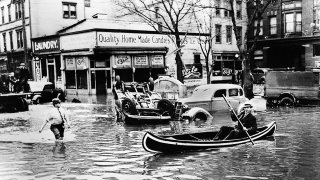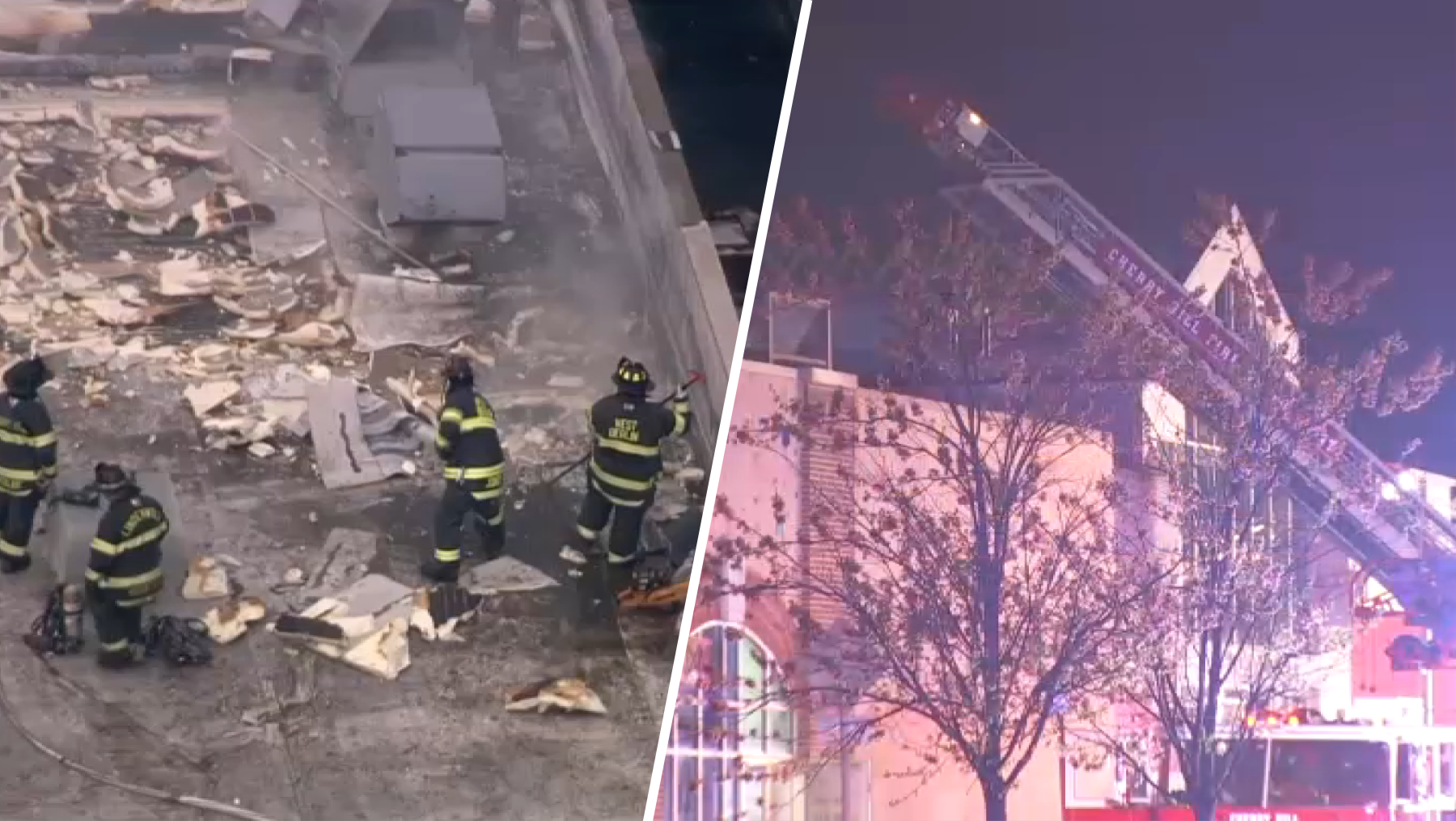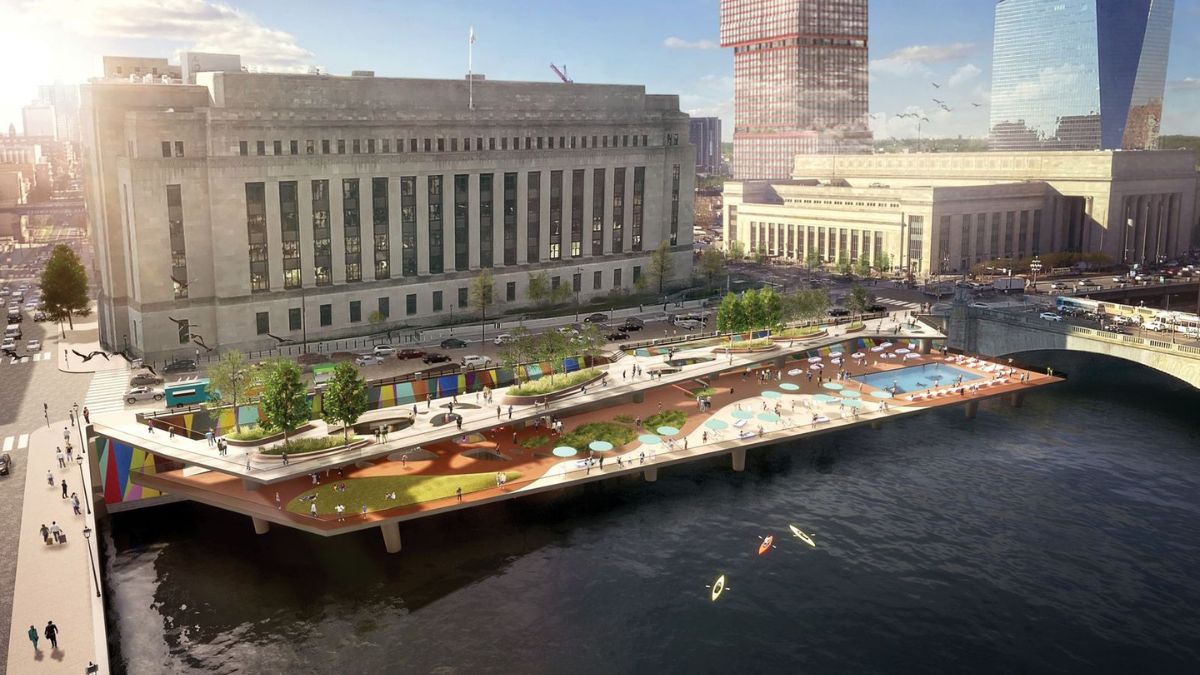
Unbeknownst to anyone at the time, the Tuesday, March 17, 1936 edition of The Johnstown Tribune foreshadowed a historic tragedy in the city.
One headline stated: “Heavy rainfall again threatens ‘record’ floods” in Pennsylvania.
But that International News Service article, which did not even specifically mention Johnstown, was not originally alarming, since spring flooding was common in the region and state. It was among more than a dozen stories on the front page, which was dominated by a package about Adolf Hitler allegedly having an “eager desire to keep peace” in Europe.
Inside, on a local news page, the paper ran a review of “Johnstown and Its Flood,” a book about the firsthand memories of author Gertrude Q. Slattery, also known as Mrs. Frank P. Slattery, during the 1889 Johnstown Flood that killed more than 2,200 people.
Get Philly local news, weather forecasts, sports and entertainment stories to your inbox. Sign up for NBC Philadelphia newsletters.
The review – picked up from The Wilkes-Barre Record – pointed out that Slattery wrote the book “to give her children the facts of her personal experiences in the flood that swept down Conemaugh Valley on May 31, 1889” and that the publication “released her from an obligation to her parents who felt that her vivid description of the harrowing details of the great deluge should be properly recorded.”
As Johnstowners read about possible flooding and the 1889 disaster, rain steadily fell on ground that was saturated due to frequent storms throughout the month and melting snow caused by temperatures in the 40s and 50s.
Soon – and for decades to come – they would be recounting their own tales of surviving a flood in Johnstown.
Local
Breaking news and the stories that matter to your neighborhood.
By the end of the day, water reached 17 feet high at City Hall.
There was not another edition of the Tribune until March 20, when the grim banner headline “25 DIE IN FLOOD” told the news of the Saint Patrick’s Day Flood of March 17-18.
‘They were used to flooding’
Rushing waters often overflowed the banks of the Little Conemaugh River, Conemaugh River and Stonycreek River and filled the streets of the low-lying city of Johnstown.
The floods ranged from minor inconveniences to serious property-damaging incidents, with some of the most severe occurring in 1891, 1894, 1902 and 1907, according to Pat Farabaugh, author of an upcoming book, tentatively titled “A History of Water and Steel in Johnstown,” about the city’s major floods of 1889, 1936 and 1977.
“These flood events happened with frequency, not the magnitude, obviously, of when the South Fork Dam broke (in 1889), but there was a sense of, ‘OK, we’re going to get this flooding, and we’re going to survive it,’ ” said Farabaugh, an associate professor of communications at St. Francis University. “I think people did think snow’s going to melt. We’re going to get some flooding. But it’s not going to be anything like they ended up getting on March 17, 1936.”
So even a notice in the local newspaper about possible flooding in the commonwealth might not have garnered a lot of attention.
“They were used to flooding,” Johnstown Area Heritage Association President and Chief Executive Officer Richard Burkert said. “Every several years there’d be water in the streets. … People knew it was going to flood. And there had been bad floods frequently between 1889 and ’36.
“But the ’36 flood peaked at 17 feet deep in the downtown. That was just a real shock to people because they had forgotten how disruptive a major flood could be.”
Roosevelt’s reaction
Several steps, including construction of the Hinckston Run Reservoir and the Quemahoning Dam, were taken after 1889 to help reduce flooding.
“I think that Johnstowners maybe became a little bit more – ‘jaded’ is not the right word, but I think there was a degree of, maybe, less trust after they experienced this flood a second time after some measures had been taken to try to protect the city,” Farabaugh said.
March 1936 floods caused damage throughout the mid-Atlantic in countless small towns – for instance, Everett, where rushing water wiped out a bridge President George Washington crossed on his way to quell the Whiskey Rebellion – and in major metropolitan areas, including Pittsburgh and Washington, D.C.
But, given its history of flooding, Johnstown received special attention.
President Franklin D. Roosevelt made a campaign stop at Roxbury Park on Aug. 13, 1936, telling 20,000 people gathered there, “I came here to see conditions with my own eyes. I believe I can render better service after getting a firsthand view than if I just stayed in Washington,” according to an account in The Johnstown Democrat.
Under Roosevelt’s administration, the U.S. Army Corps of Engineers constructed the city’s flood prevention river walls, which were dedicated in November 1943.
“It was a godsend for a town that got nailed twice by some of the worst floods in the United States,” Burkert said.
The only time the rivers have flooded the downtown since then was in July 1977, when 11 inches of rain fell over two days, causing six dams to fail.
Devastation, then response
About 66,000 people lived in Johnstown in 1936.
There were theaters, bars, pool halls, streetcars and diners in a bustling downtown.
But Johnstown, like the rest of the nation, was struggling through the Great Depression.
“It was an insecure period, but generally people were making do,” Burkert said.
The economy was dominated by Bethlehem Steel. That singular focus on steel-making and coal-mining hurt the city during down times, according to Farabaugh.
“I would say it was a little bit more difficult during the Depression for Johnstowners than it was in other places around the country because of that failure to diversify,” Farabaugh said.
Then the water came, causing more than $40 million in damages, which would equate to about $750 million in today’s money.
Some isolated crime, specifically looting, occurred.
But many individuals and organizations responded with kindness and support.
“You had farmers that were donating part of their harvest from the fall of ’35,” Farabaugh said. “The Blair County Milk Dealers Association delivered truckloads of different basics, like eggs and milk. You had farmers in the northern part of the county send lots of stuff down there. There were coal piles that were set up where people could go to these coal sites that mining companies had donated. People came and got the coal that they needed to heat their homes at no cost.”
Farabaugh said the overall response to the devastating flood provided a reminder “that there’s good people in this area.”



